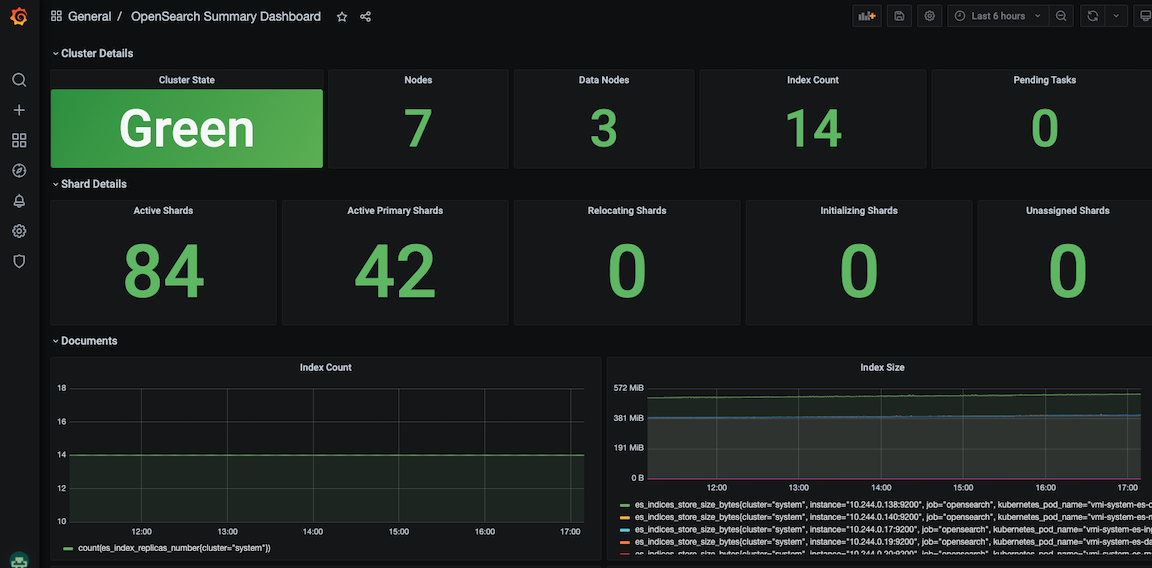On May 24, 2022, we released Verrazzano 1.3.0. In this release, we focused on flexibility of configuration as requested by a number of Verrazzano users. As usual, we updated many of the key components in the platform. And as usual, the software is available on GitHub at https://github.com/verrazzano/verrazzano/releases and on Oracle Software Delivery Cloud.

Configuration Flexibility
One of Verrazzano’s claim to fame is its ease of installation: two simple kubectl commands, and the platform is up and running with a production-ready configuration. However, sometimes you need a different configuration to meet your workload needs. In Verrazzano 1.3, we made it very easy to customize the configuration. For example, you can now easily define your OpenSearch topology to fit your log data volume and other usage characteristics. Take a look at the docs.
What is interesting about this new way to configure OpenSearch is its Kubernetes nativeness. (yeah, I just made up that word, but you know what I mean!) Let me explain a little, just in case: Verrazzano is built as a series of custom Kubernetes resources. However, in previous releases, the main Verrazzano custom resource was created using a set of installation arguments that prescribed a portion of the configuration. In Verrazzano 1.3, we are moving towards a more flexible model that uses a subset of the component CRDs – such as the OpenSearch CRD – as the means to define the Verrazzano configuration, and we embed that subset within the Verrazzano CRD. And with a component like OpenSearch where there are many topology options, this more flexible configuration will make Verrazzano more easily adaptable for lots of scenarios.
In Verrazzano 1.3, we also made it possible to update most of the Verrazzano configuration after installation. You can modify the Verrazzano custom resource to change the configuration, and the Verrazzano operators will pick up and implement the config changes.
This new configuration flexibility applies to many of the components in Verrazzano. Take a look at the docs at https://verrazzano.io/latest/docs/setup/customizing/.
Sticking with OpenSearch for a moment, we’ve also added configuration for index state management policies to the Verrazzano custom resource. With these policies, you can configure OpenSearch to automatically manage data so that you can keep the data you need without running out of storage. See the docs at https://verrazzano.io/latest/docs/setup/customizing/opensearch/#configure-index-state-management-policies.
And lastly for OpenSearch, Verrazzano now ships with a Grafana dashboard for monitoring OpenSearch.

New and Updated Components
In Verrazzano 1.3, we updated some key components:
- Verrazzano now runs on Kubernetes 1.21, 1.22, and 1.23.
- Cert-manager 1.7.1
- Istio 1.13.2
- Kiali 1.42.0
- NGINX Ingress Controller 1.1.1
- Node Exporter 1.3.1
- Prometheus 2.34.0
- Rancher 2.6.4
- WebLogic Kubernetes Operator 3.4.0
- Coherence Operator 3.2.5
We also added some components that are targeted at advanced users:
- Alert-manager 0.24.0
- Jaeger 1.32.0
- Prometheus Adapter 0.9.1
- Prometheus Operator 0.55.1
- Prometheus Pushgateway 1.4.2
All of these new components are included in the Verrazzano platform and can be manually enabled and configured. They are not yet fully integrated into the automated installation and upgrade facilities. We wanted to make these components available as early as possible so that users who need them can have access to them. Full integration is in progress.
Conclusion
I hope you like the direction we are taking with Verrazzano: out of the box simplicity, with flexibility to configure individual components as you need them.
Why not take it for a spin? Here are a few resources:
